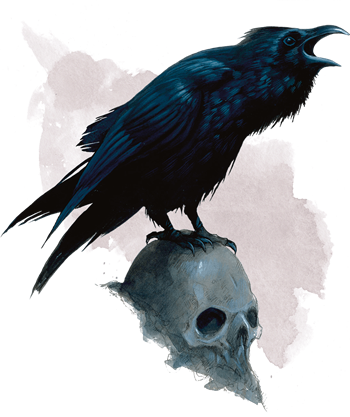 Spell Spotlight examines D&D’s best, worst, and most interesting spells, giving you the tools you need to play a spellcaster who knows exactly what they’re doing. Today, we’re looking at an iconic spell that can transmogrify even the most fearsome dragon into a mewling kitten: polymorph! Available to bards, druids, sorcerers, wizards, and Trickery Domain clerics, this spell is useful to help friends and hamper foes—but just like any spell with creative applications, things can go wrong if you don’t know what you’re doing.
Spell Spotlight examines D&D’s best, worst, and most interesting spells, giving you the tools you need to play a spellcaster who knows exactly what they’re doing. Today, we’re looking at an iconic spell that can transmogrify even the most fearsome dragon into a mewling kitten: polymorph! Available to bards, druids, sorcerers, wizards, and Trickery Domain clerics, this spell is useful to help friends and hamper foes—but just like any spell with creative applications, things can go wrong if you don’t know what you’re doing.
What is Polymorph?
Polymorph is a 4th-level transmutation spell available to a wide variety of spellcasting classes. It’s a useful spell that, because of its level, becomes available right after most classes get some of their most exciting and class-defining spells like fireball, animate dead, and call lightning. It requires an action to cast upon a creature you can see within 60 feet of you, making it useful against most creatures in close-quarters combat.
This spell allows you to target one creature, either friend or foe, and transform them into a beast. This beast’s challenge rating must be equal to or lower than the creature’s challenge rating, or their level, if they don’t have a challenge rating. You can target yourself with this spell, too! The target creature can attempt to make a successful Wisdom save in order to completely resist the effects of the spell, making it most useful against creatures with low Wisdom saves.
Once you’ve transformed a creature, you can maintain the spell for up to an hour by concentrating on it. If you lose concentration, the spell immediately ends and the affected creature immediately returns to their original form. The spell also ends if the creature’s polymorphed form is reduced to 0 hit points—similarly to the druid’s Wild Shape feature.
Careful! Don’t Misread this Spell
The most common mistake people make when using polymorph is that while the spell can target any type of creature, it can only transform them into beasts. Creatures of other types, even beast-like monstrosities like owlbears, rocs, or griffons, aren’t valid transformation options. The spell true polymorph doesn’t have this beast-only restriction, allowing you to transform other creatures into any type of being, from celestials to fiends to dragons.
If you need help choosing what beasts you can transform a creature into using this spell, check the D&D Beyond Monster tool and select the Beast button on the creature type bar at the top of the page.
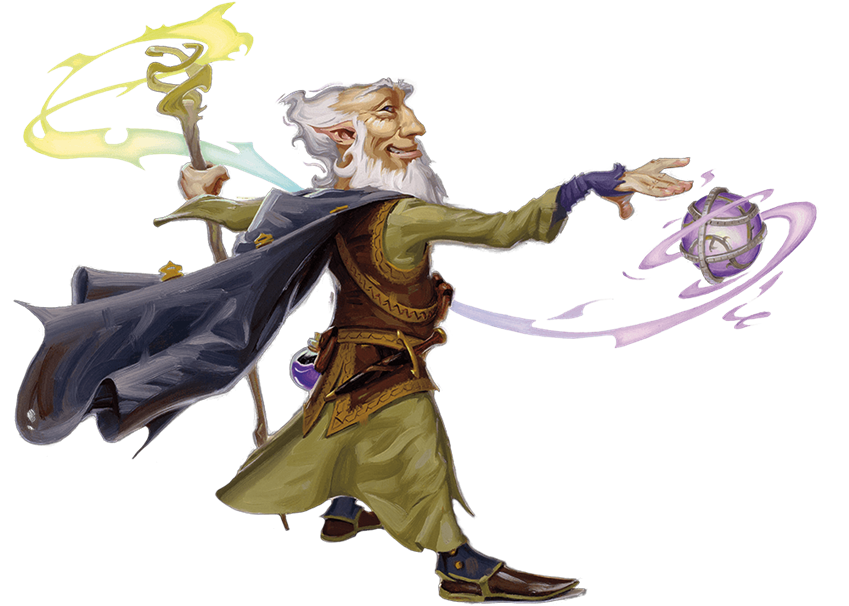
Against Enemies: Using Polymorph in Combat
In combat, polymorph’s most consistently useful application is as a crowd control tool. In a fight with multiple powerful enemies, temporarily transforming a beefy baddie into a wimpy lizard to render it useless while you wail on its allies is a great use of a 4th-level spell slot.
When you cast polymorph, the target must make a Wisdom saving throw. On a failed save, the spell takes effect. On a successful save, the spell fails completely. Because of the all-or-nothing nature of this spell, it’s best to use it on targets that you’re reasonably confident will fail the save. This means prioritizing targets that (probably) have a low Wisdom saving throw. Spellcasters tend to have high Wisdom saves, and are therefore likely to resist this spell, whereas physically powerful creatures tend to have low Wisdom saves, making them much better targets.
Be warned that creatures with Legendary Resistance, like adult dragons, can succeed automatically against spells like this, no matter what bonuses they have to their saving throws. You can strategically use weaker spells to try and bait out their uses of Legendary Resistance before dropping debilitating spells like polymorph.
Lastly, consider creative uses of polymorph in combat. While its main use is to allow you to ignore an enemy for a while, a more proactive stance could allow you to annihilate a helpless enemy in a matter of seconds. Transforming a hulking fire giant into a frog and then having another wizard cast fly on you (or using a natural fly speed from races such as aarakocra or winged tieflings) allows you to soar into the air and then drop the transformed foe hundreds of feet onto the uncaring ground below. Since the toad only has 1 hit point, all but a single point of 70 (20d6) falling damage will go straight to your enemy’s actual hit points.
This damage could defeat a foe, but consider the other terrain hazards you have available to you. Throwing your enemy off a cliff could deal serious damage and give you plenty of time to escape before they can climb back up. A pool of lava is near certain death for many foes. Creative problem solving is one of the greatest things D&D can offer over the less-reactive medium of video games, and polymorph makes excellent use of that creative space.
Polymorph versus Banishment
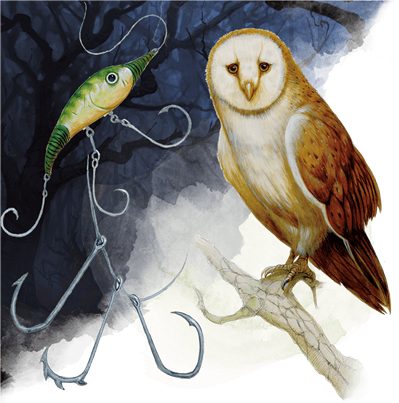 Polymorph is useful, but it has a lot of failure points. An enemy could pass its saving throw, negating the entire spell. You could take an unlucky hit and lose concentration on the spell, causing it to end prematurely. Or, one of the enemies could get wise to your spellcraft and give their friend a good knock on the end, dropping their newly transfigured form to 0 hit points and ending the spell early. Because of these many awkward points, polymorph can seem weak compared to another similar 4th-level crowd control spell: banishment.
Polymorph is useful, but it has a lot of failure points. An enemy could pass its saving throw, negating the entire spell. You could take an unlucky hit and lose concentration on the spell, causing it to end prematurely. Or, one of the enemies could get wise to your spellcraft and give their friend a good knock on the end, dropping their newly transfigured form to 0 hit points and ending the spell early. Because of these many awkward points, polymorph can seem weak compared to another similar 4th-level crowd control spell: banishment.
Despite these potential failure points, polymorph remains well-balanced against banishment, and remains a spell well worth preparing at the start of a day. Why? The main reason is its flexibility. Whereas banishment performs one task exceptionally (single-target crowd control), polymorph is trades a little bit of reliability for a great deal of flexibility in a variety of ways, such as:
- Longer duration. Though both spells require concentration, polymorph lasts for up to a full hour, whereas banishment only lasts 1 minute. This makes polymorph a better solution to removing creatures that could pose a problem outside of combat, or who could pose a problem if you need to return to an area that you previously explored.
- Creative offensive uses. As described above, with some creative application of the environment, polymorph can be used to incapacitate a foe just long enough to cause them serious damage.
- Ally usage. Polymorph can transform characters into beasts as powerful as a mighty tyrannosaurus rex or a fearsome giant ape, granting allies powerful attacks and a vast pool of extra hit points. Just watch out for the inevitable drop in their mental statistics, if your DM is the type of person to play dirty.

For Dungeon Masters: Do Monsters Know How Polymorph Works?
Most Dungeon Masters whose players use polymorph to temporarily turn one of their monsters into a harmless lizard will ask themselves this one question: “Is this monster (or its allies) smart enough to know how that smashing its head into a rock and taking just 1 bludgeoning damage would fix everything?”
There’s an easy solution. If a creature wants to find a solution to its friend (or itself!) being magically transformed into a spider, allow it to use an action to make an Intelligence (Arcana) check with a DC equal to 10 + the level of the spell it’s trying to understand. Since polymorph is a 4th level spell, that makes the DC of this check 14. If the creature has seen the spell cast before in a memorable way, they have advantage on this check. Finally, if a creature can cast this spell, they don’t have to make a check to know how the spell of works.
This check doesn’t necessarily have to represent any particular insight into the inner workings of the arcane. A magically inept hill giant might succeed on this check through sheer luck. You as the DM get to determine what a success means. Maybe this hill giant actually had studied some magic after eating a wizard and going through her belongings! Or maybe they just had a hunch that smacking their transformed friend on the head really hard would fix things; a good smack solves most hill giant problems, doesn’t it?
And as long as we’re talking to Dungeon Masters, there’s always going to be a time where a player wants to transform an enemy into a weak little beast that can’t fight back… but that doesn’t have an official stat block, like a turtle or a flea. Just pick the closest appropriate CR 0 beast, like a frog or a spider. This is a great situation to try out some simple, low-stakes improvisation.
On Allies: Using Polymorph to Explore or Attack
As mentioned above, polymorph’s greatest strength is its versatility. It’s just as useful buffing an ally as it is incapacitating enemies. The only trick is that, since most beasts have an Intelligence score of 3 or lower, you can’t expect a transformed character to have any idea of what they set out to do in the first place. They should act like a beast would—purely on instinct. A creature with an Intelligence of 4 or higher might have some idea of who their friends and foes are, but trusting a velociraptor to distinguish between friend and foe is a fool’s errand; they’re going to go after the weakest-looking prey.
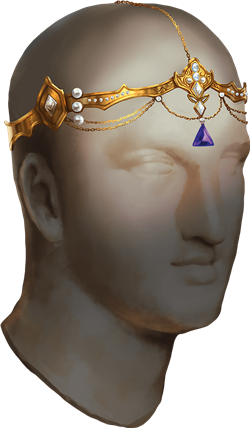 Unfortunately, even wearing a headband of intellect won’t save you from becoming a big, dumb beast while under the effects of this spell, since you can’t benefit from any of your equipment while you’re transformed. Because of this, your best bet when using polymorph as a combat tool is to have your friend get as close to the enemy as possible, then transform them into the strongest monster you can, and stay the hell away!
Unfortunately, even wearing a headband of intellect won’t save you from becoming a big, dumb beast while under the effects of this spell, since you can’t benefit from any of your equipment while you’re transformed. Because of this, your best bet when using polymorph as a combat tool is to have your friend get as close to the enemy as possible, then transform them into the strongest monster you can, and stay the hell away!
Similarly, while turning an ally into a hawk in order to spy on your foes may seem like a good idea on paper, a humanoid transformed into a hawk is no more likely to be a useful spy than a natural-born hawk. In fact, they’re likely to be less useful, because they lack any sort of training or domestication.
If you want to transform a party member into an excellent scout, there are a few options available to you. The giant owl is physically frail, but can fly swiftly and has an Intelligence of 8. More than that, it can understand Common, though it can’t speak it. Since you retain your personality while polymorphed, this combination of intelligence and the ability to understand speech means that you can still be an excellent and (relatively) keen-minded scout. Their size makes them a bit conspicuous, but their innate bonus to Dexterity (Stealth) checks helps them somewhat.
The giant eagle and giant vulture are similar to the giant owl, but are physically hardier. These three creatures are all great options for animal scouts! However, if your party is playing through Storm King’s Thunder, you may have met a tressym, a spectacular little winged cat with human-level intelligence, immunity to poison, the ability to understand Common (but not speak it), and even see through invisibility! They may be physically frail, but you couldn’t ask for a better animal scout to transform into! Be aware, however, that as of Baldur's Gate: Descent into Avernus, the [Tooltip Not Found] has been modified from a beast to a monstrosity, making it an invalid polymorph form. Always talk with your DM first!
Don’t spring this beast on your DM unannounced; that’s a bit of a jerk move. Start by asking them if this is an animal form they’re okay with you using. Of course, if tressyms have appeared in your game before now, then the (winged) cat is already out of the bag.
What forms would you polymorph yourself into? What would you like to transform foes into in order to render them useless in battle? Let us know in the comments below!
Create A Brand-New Adventurer Acquire New Powers and Adventures Browse All Your D&D Content
 James Haeck is the lead writer for D&D Beyond, the co-author of Waterdeep: Dragon Heist, Baldur's Gate: Descent into Avernus, and the Critical Role Explorer's Guide to Wildemount, a member of the Guild Adepts, and a freelance writer for Wizards of the Coast, the D&D Adventurers League, and other RPG companies. He lives in Seattle, Washington with his fiancée Hannah and their animal companions Mei and Marzipan. You can find him wasting time on Twitter at @jamesjhaeck.
James Haeck is the lead writer for D&D Beyond, the co-author of Waterdeep: Dragon Heist, Baldur's Gate: Descent into Avernus, and the Critical Role Explorer's Guide to Wildemount, a member of the Guild Adepts, and a freelance writer for Wizards of the Coast, the D&D Adventurers League, and other RPG companies. He lives in Seattle, Washington with his fiancée Hannah and their animal companions Mei and Marzipan. You can find him wasting time on Twitter at @jamesjhaeck.








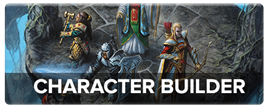
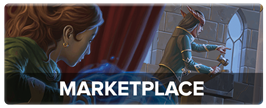
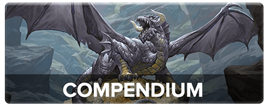
-
View User Profile
-
Send Message
Posted Sep 2, 2020great article. i always thought banishment was usless.
-
View User Profile
-
Send Message
Posted Sep 2, 2020Lovely and a really fun spell. Probably one of my favourite. And first!
-
View User Profile
-
Send Message
Posted Sep 2, 2020Great tips! I never thought about this spell past the CC and T-rex thing.
-
View User Profile
-
Send Message
Posted Sep 2, 2020will you do one on true polymorph
-
View User Profile
-
Send Message
Posted Sep 2, 2020My Warlock polymorphed our Cursed Wizard into a Giant Gorilla so we could take out a Hag Coven.
A fun time was had by all, except one of the Hags who the Wizard went full King Kong with before smashing her into the ground.
-
View User Profile
-
Send Message
Posted Sep 2, 2020An important thing to note about tressym: WotC recently changed their creature type. in Storm King's Thunder, they're beasts, but more recently in Baldur's Gate: Descent into Avernus, they're monstrosities. A similar thing happened to steeders, which were beasts in Out of the Abyss, but monstrosities in Mordenkainen's Tome of Foes.
-
View User Profile
-
Send Message
Posted Sep 2, 2020I remember the time in High Rollers season 1 where the trickster cleric Cam polymorphed a fire giant into a badger then tossed her into a trap they had avoided previously, making the fight considerably easier than it would have been otherwise.
-
View User Profile
-
Send Message
Posted Sep 2, 2020ha i got seventh comments woo who . ok this is amazing i am relativly new to D&D and i always find it helpful to learn other peoples ideas for spells and such. also i mainly play a dragonborn sorcerer and have ideas for ice based spells and want to talk about it just send them on homebrew with my name on it and i will take a look and likely comment on it. (basicly i need ideas for spells and such for a ice based dragonborn.)
-
View User Profile
-
Send Message
Posted Sep 2, 2020Another way to get around that Intelligence drop is to have a party member who can communicate with beasts (firbolg, forest gnome, warlock with beast speech) who can remind your polymorphed ally what the goal is.
I imagine this is maybe inspired by the recent t-rex shenanigans on Critical Role, and I do like how Matt rules on polymorphed Intelligence: you remember your general goal (fight these people, get to this location) and can recognize your allies. But that goes both ways: a polymorphed dragon turtle will keep on pursuing you, even though it now has the intelligence of a regular sea turtle.
-
View User Profile
-
Send Message
Posted Sep 2, 2020Since this is the Official Toolset of D&D which version of the Tressym is the official version?
-
View User Profile
-
Send Message
Posted Sep 2, 2020I'm about to start a campaign with a Draconic Bloodline sorcerer, we're just changing the language from Draconic to Primordial and not giving him wings, but still a fly speed, to homebrew the subclass into a cryomancer sorcerer. Just go onto the list of sorcerer spells, click on "damage type," and click "cold." That should cover your cold-damage-dealing spells, but remember to prepare other helpful spells or spells that don't deal cold damage in case your DM gets smart and makes you fight a frost giant or something.
-
View User Profile
-
Send Message
Posted Sep 2, 2020Polymorph's defensive use is also crazy good. If you're in a fight that's starting to go poorly for a character, you can now turn them into a giant ape and give them 157 hit points and give them a chance to really be in the fight, compared to a clerics 4th level cure wounds that would probably heal for 23 hp? Most monsters at that level could go through that in a round no problem. This puts them back in the fight and saves your cleric from having to keep bringing them back up every round. Plus it's fun to be a T-Rex or Giant Ape sometimes! :)
-
View User Profile
-
Send Message
Posted Sep 2, 2020this spell has some serious comedy value, and also combat value. transforming a friend(or even yourself!)into a T-rex is A:hilarious(if they're willing) and B:a great way to annihilate a group of enemies.
-
View User Profile
-
Send Message
Posted Sep 2, 2020I've had great luck with Banishment in the Tomb of the Nine Gods
-
View User Profile
-
Send Message
Posted Sep 2, 2020"Ally usage. Polymorph can transform characters into beasts as powerful as a mighty tyrannosaurus rex or a fearsome giant ape, granting allies powerful attacks and a vast pool of extra hit points. Just watch out for the inevitable drop in their mental statistics, if your DM is the type of person to play dirty."
This seems familiar... XD
-
View User Profile
-
Send Message
Posted Sep 2, 2020I'd say a Tressym is a monstrosity because most things that are more fantastical than a slightly more intelligent and bigger version of a real world animal are considered monstrosities, not beasts.
-
View User Profile
-
Send Message
Posted Sep 2, 2020Hmm. I re-read the spell and saw the rule about mental ability scores changing. I think that if something had an simple objective ("Grab the crystal, beat up the froghemoth, run away, etc.") it would continue attempting to complete the task unless something drastic (boulder rolls down hallway) happened. I feel like the character should run the animal as if it were commanded to do something.
-
View User Profile
-
Send Message
Posted Sep 3, 2020Also if you use it with power-word-kill, you can instantly delete almost any enemy.
-
View User Profile
-
Send Message
Posted Sep 3, 2020Turn enemy into a frog or lizard, throw it off a cliff just as someone shoots it with an arrow or spell, so they take full fall damage.
-
View User Profile
-
Send Message
Posted Sep 3, 2020Just dropping them is probably a better idea, you only miss out on dealing 1 damage, and it doesn't give the opponent any time to react at all. They could always have a potion, magic item, spell, racial ability, class feature or monster trait or something else entirely that lets them resist or even negate the damage. Even a lowly goblin might have looted a Potion of Flying at some point. Just letting them fall while polymorphed removes any chance of anything going wrong in exchange for 1 damage.